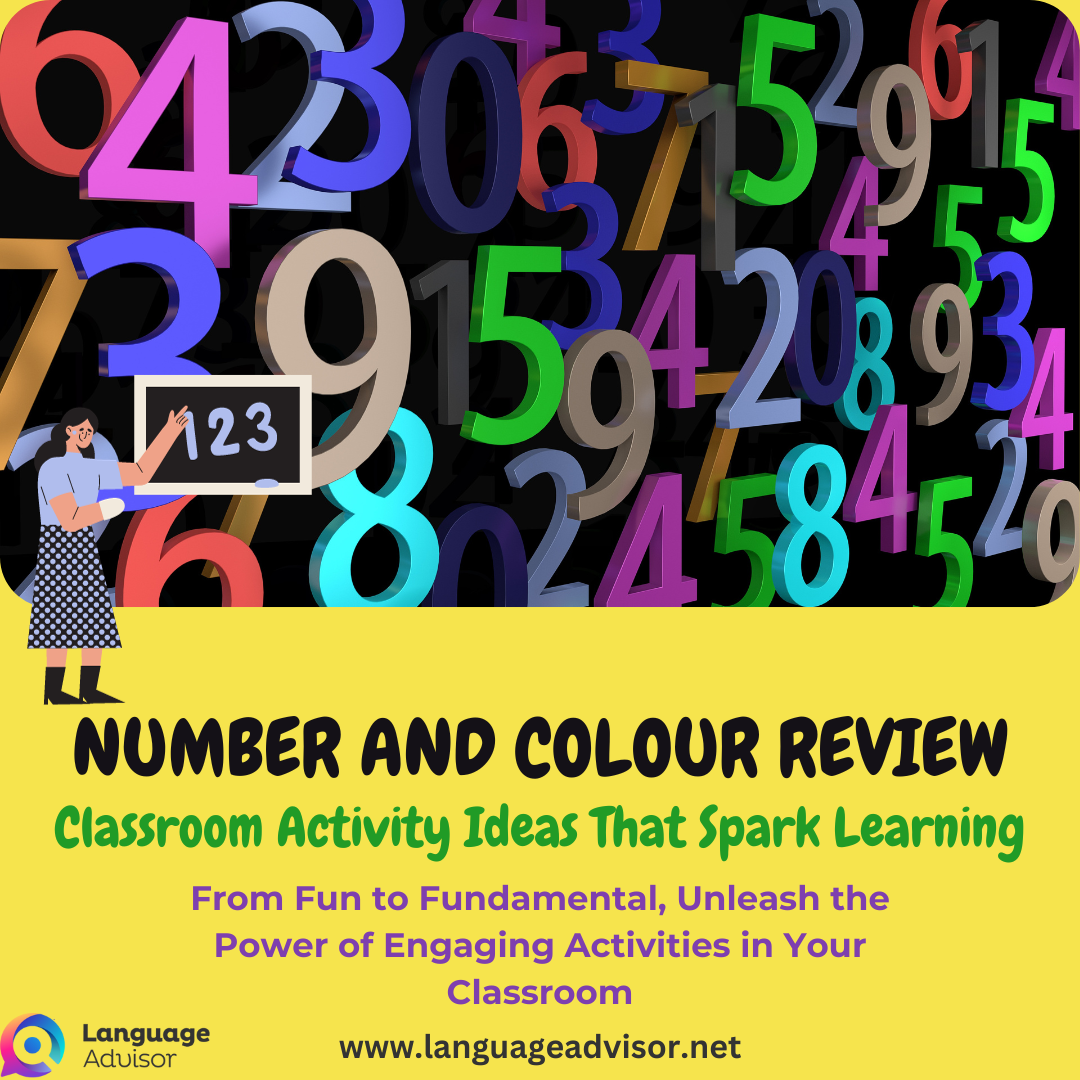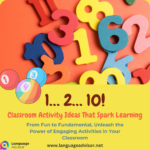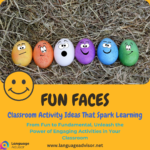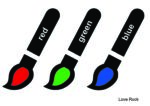NUMBER AND COLOUR REVIEW. Classroom Activity Ideas That Spark Learning. From Fun to Fundamental, Unleash the Power of Engaging Activities in Your Classroom
NUMBER AND COLOUR REVIEW

NUMBER AND COLOUR REVIEW. Classroom Activity Ideas That Spark Learning
Every teacher knows that a dynamic and engaging classroom is the cornerstone of effective education. To keep the learning environment vibrant and inspiring, it’s essential to incorporate innovative classroom activities that capture students’ imaginations and enhance their educational experience. In this blog post, we’re excited to present a treasure trove of creative and versatile classroom activity ideas that cater to a wide range of subjects, grade levels, and teaching styles. Whether you’re a seasoned educator looking to revamp your teaching strategies or a new teacher eager to make a memorable impact, these activity ideas will breathe new life into your classroom. So, let’s embark on this educational journey and explore a world of exciting possibilities that will make learning not just informative but unforgettable.





NUMBER AND COLOUR REVIEW
Target Group: 1-4th year
Difficulty Level: Fundamentals
Activity Objective: To review their numbers and colours
Procedure
Basically, it mainly focus on the numbers (1-20), a few colours and simple math. The game is very simple to play. Put all the little coloured magnet on the right (or left) side of the black board. Then not too far from them, tape the top edges of a poster or a piece of paper to the black board. You
want to make sure the poster (or paper) is big enough to cover 20 small coloured magnets behind it. If you used 4 different coloured magnet (example–pink, blue, red, yellow), you should have 20 altogether or more on the board. At the beginning of the class, have the students count how many coloured magnets are in each colour group on the board. For example, 5 pink, 5 blue, 5 red and 5 yellow. Write these numbers on the board as a reminder for the students. Tell the students, that the rule of the game is that, you are going to slowly move some magnets from the right side of the board to behind the sheet of paper. They`ll have to keep track of how many are behind the piece of paper. Start out simple, move just one magnet to behind the piece of paper. It is important that when you are doing this, you make sure the students are all looking at you and move it slowly.
After that, you then asked the class, “how many are behind the paper?” while pointing to the piece of paper. Tell them to raise their hand and call on them to give the answer. The answer should be “one”. The point of the game is to emphasis the numbers in English. Next round, move the magnet out from behind the piece of paper before you start the round. Try to add some subtraction in there by moving three magnets behind the piece of paper then take 1 of them out back into the pile of magnets before you ask them “how many are behind the paper?”. The answer should be “two.” (3-1=2). To make the game harder, you could incorporate the colour of the
magnets into the game. Instead of asking how many are behind the paper, ask “how many red one (s) are behind the paper?”
Materials and Preparation
1) little coloured magnets (about three to 4 different colours of 20 altogether). Put them randomly on the board on either the right or left side of the board.
2) a poster or a piece of paper (size A4 or up). Tape this to the side opposite of the coloured magnets.
Suggestions and Advice
This is a straightforward activity, so there isn’t much preparation required. The most challenging part would be getting all of you engaged in the activity, especially if you have a large class. Keep in mind that different classes may progress at varying paces, and students may have different English proficiency levels. It’s important to gauge what your class can handle and adjust accordingly.
To motivate you and your classmates to keep up with the pace, distribute stickers as rewards for correct answers.





Classroom Activity Ideas That Spark Learning
In the ever-evolving landscape of education, the role of teachers is not just to impart knowledge but also to inspire, engage, and empower their students. The classroom activities we’ve explored in this blog post are more than just tools for teaching; they are catalysts for transformation. They have the potential to ignite a passion for learning, foster critical thinking, and build meaningful connections among students.
As educators, we are tasked with shaping the future, and these activities are powerful tools in our arsenal. By embracing innovation and adopting creative approaches to teaching, we create environments where students not only learn but also thrive.
So, whether you’re a seasoned teacher looking to rejuvenate your classroom or a new educator embarking on your teaching journey, remember that every activity you introduce is a chance to make a lasting impact. Keep experimenting, keep adapting, and keep kindling the flames of curiosity and knowledge within your students.
The possibilities are endless, and the future is brighter because of the dedication of teachers like you. Thank you for your commitment to the world of education and for seeking out ways to spark learning in your classroom.
Together, we can continue to inspire the leaders, thinkers, and innovators of tomorrow.





Also check out these articles on teaching, teaching methods and teaching tools
















